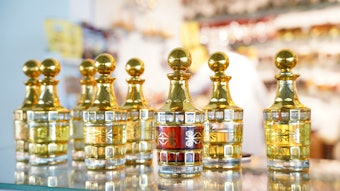In 2013, global brands largely failed to capitalize on resurgent economic confidence in developed markets, while formerly booming emerging markets became less dependable as growth engines. The end result saw global sales increase 5% at fixed U.S. dollar prices, down from 6% in 2012.
Demand for products with multi-tasking solutions spread right across the industry, triggering fiercer cross-category competition as brands battled to recruit new consumers and hang on to existing ones. The innovation stakes in terms of product development, marketing and distribution ratcheted up, reflecting a consumer base that has become brand savvy and hungry for novelty, yet is increasingly price sensitive.
Multitasking Remains Key
Multitasking brands remain at the forefront of product innovation. This is squeezing growth in the overall value of the market since consumers now expect a single product to serve multiple functions, whereas in the past they might have purchased two or three products to do the same things. In developed markets, it is telling that the total value of beauty and personal care climbed only 1% in 2013, compared with 2% in the two preceding years.
BB/CC creams kicked off the multitasking trend but they have cross-fertilized across almost all industry categories, especially in Western Europe and North America. Anti-aging and moisturizing are the must-have functions, visible in categories as wide-ranging as foundations, nail polish, hair care and lipstick. This has raised the bar for industry innovators.
All Ages
Manufacturers also are beefing up their portfolios with age-specific products. Brands targeted at teens and tweens have become big business but the upper end of the age pyramid presents some of the most attractive opportunities for product development. According to Euromonitor International, the global population of women ages 50 and older will grow from 870 million to 1.3 billion over the next decade and a half. Tapping into this “gray dollar” will become increasingly critical as the beauty industry chases down growth.
Category Ups and Downs
The deodorant sprays category was the standout performer in 2013, growing 11% at fixed U.S. dollar prices. The key here is young men, especially in developed markets, who are buying deodorants rather than pricier aftershaves or fragrances. This has been a prevailing trend for the last five years. However, operating conditions could get tougher as the number of people aged 13 to 45 shrinks. To retain the high growth rates of recent years, brands will need to be more effective at recruiting older consumers.
Meanwhile, skin care put up its weakest performance in four years, with growth slipping below 5% in 2013. This is further evidence that multitasking products are diluting the category’s total value. Skin care performance was notably sluggish in key markets, including Japan, the United States and Western Europe. It also lost momentum in Brazil as an increasingly cash-conscious middle class reined in spending.
The industry is challenged by a fast, fickle and convenience-fueled consumer culture, and that contributes further to the demand for multi-solution beauty products and affordable price points. The industry is in the midst of sweeping strategic change, with the consumer—more than ever—dictating the terms. Against this backdrop, there also is a shifting demographic landscape in which the “gray dollar” is growing in importance. The key implication for the industry is that brand strategies must be fine-tuned and almost bespoke in their execution. These are challenging times, with growth difficult to etch out. However, there has probably never been a more exhilarating period for cosmetics.










